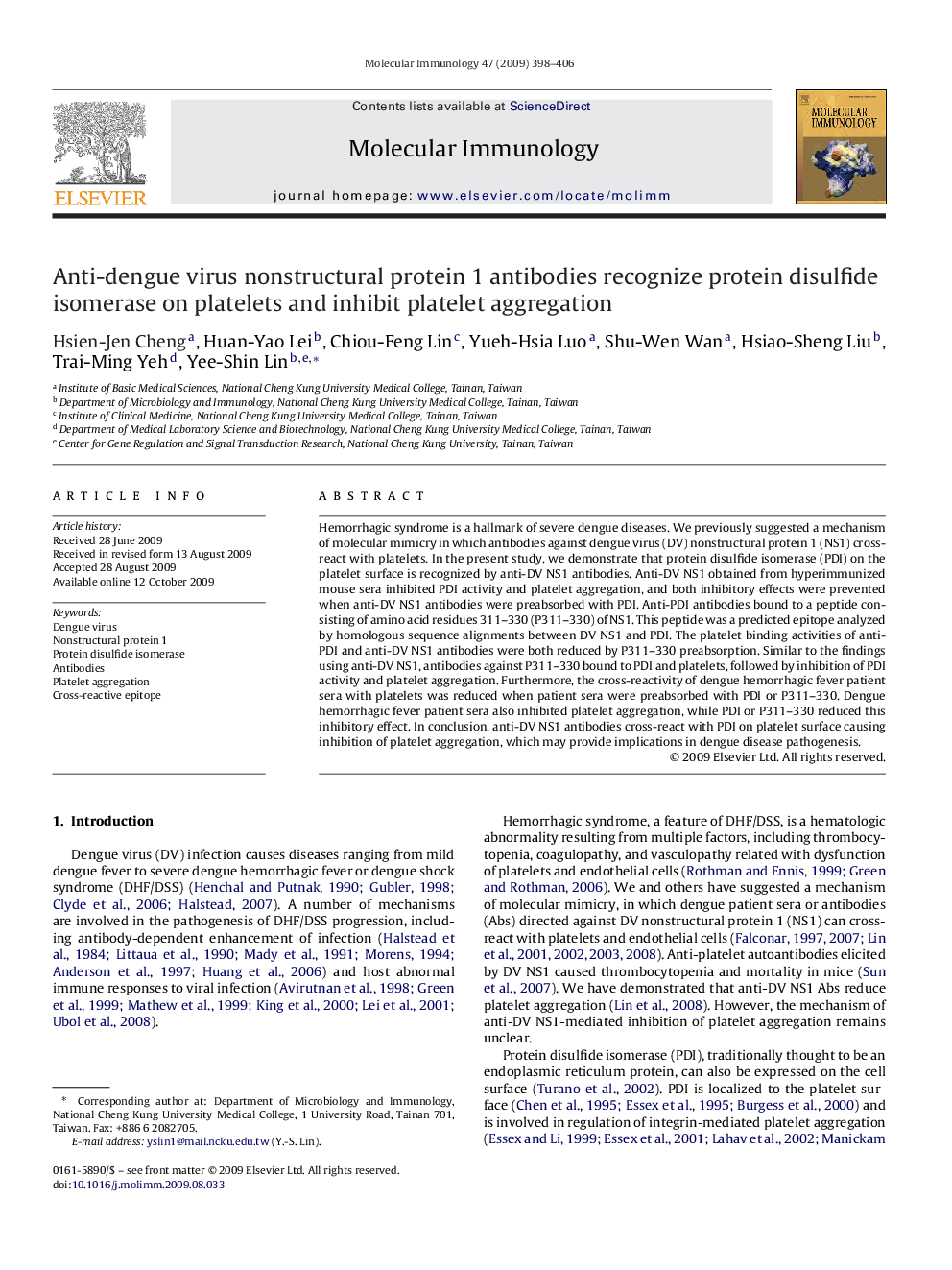| Article ID | Journal | Published Year | Pages | File Type |
|---|---|---|---|---|
| 5917608 | Molecular Immunology | 2009 | 9 Pages |
Hemorrhagic syndrome is a hallmark of severe dengue diseases. We previously suggested a mechanism of molecular mimicry in which antibodies against dengue virus (DV) nonstructural protein 1 (NS1) cross-react with platelets. In the present study, we demonstrate that protein disulfide isomerase (PDI) on the platelet surface is recognized by anti-DV NS1 antibodies. Anti-DV NS1 obtained from hyperimmunized mouse sera inhibited PDI activity and platelet aggregation, and both inhibitory effects were prevented when anti-DV NS1 antibodies were preabsorbed with PDI. Anti-PDI antibodies bound to a peptide consisting of amino acid residues 311-330 (P311-330) of NS1. This peptide was a predicted epitope analyzed by homologous sequence alignments between DV NS1 and PDI. The platelet binding activities of anti-PDI and anti-DV NS1 antibodies were both reduced by P311-330 preabsorption. Similar to the findings using anti-DV NS1, antibodies against P311-330 bound to PDI and platelets, followed by inhibition of PDI activity and platelet aggregation. Furthermore, the cross-reactivity of dengue hemorrhagic fever patient sera with platelets was reduced when patient sera were preabsorbed with PDI or P311-330. Dengue hemorrhagic fever patient sera also inhibited platelet aggregation, while PDI or P311-330 reduced this inhibitory effect. In conclusion, anti-DV NS1 antibodies cross-react with PDI on platelet surface causing inhibition of platelet aggregation, which may provide implications in dengue disease pathogenesis.
